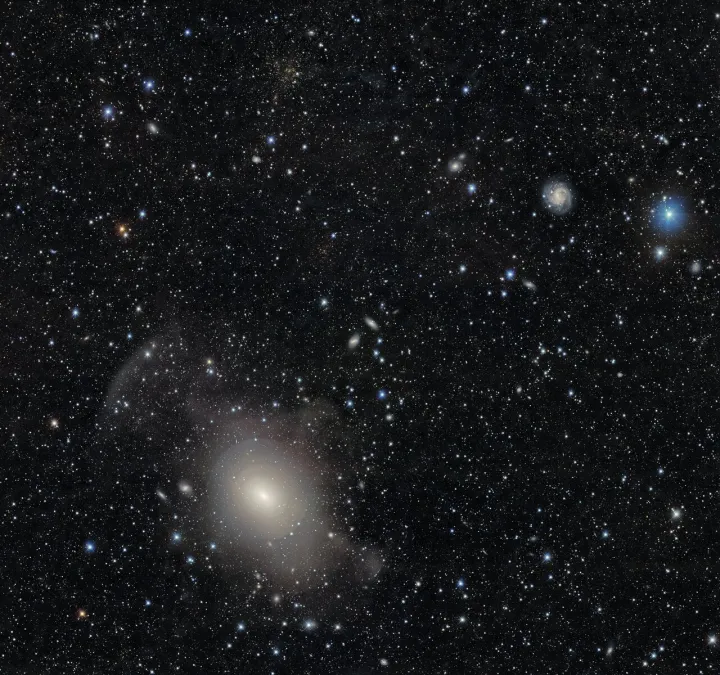A new image taken by the Dark Energy Camera shows a “galactic onion,” a shell galaxy with multiple layers that are spread out over a distance of 150,000 light-years. At around twice the size of the Milky Way, the galaxy NGC 3923 is large, but even larger is a nearby galaxy cluster that has so much mass that it is bending space-time, making the light from distant galaxies behind it bend like a magnifying glass in a process called gravitational lensing.
The Dark Energy Camera is ground-based instrument located at the Víctor M. Blanco 4-meter Telescope in Chile and was originally built to observe many galaxies as part of a project called the Dark Energy Survey. Now, it is also used for other observations such as imaging dwarf galaxies, merging galaxies, and more.

The main feature of this image is the shell galaxy, which is a type of elliptical galaxy in which the stars are not spread evenly, but are instead arranged into shell-like structures. Spiral galaxies like the Milky Way don’t have this arrangement of stars, but it is thought that around one-tenth of elliptical galaxies do, and that the structure is created when two galaxies merge and a larger galaxy absorbs a smaller companion.
Two galaxies merging was what happened here, as NOIRLab explains: “As they merged, the larger galaxy’s gravitational field slowly peeled off stars from the smaller galaxy’s disk. Those stars began to gradually mix with the larger galaxy’s outer halo, forming concentric bands, or shells. A simple analogy is adding a drop of food color to a bowl of batter that you’re slowly stirring. The drop gets stretched out in a spiral that remains visible for a long time before completely mixing.”
The other important feature of this image is harder to see, but is located at the top center. A massive galaxy cluster called PLCK G287.0+32.9 is bending space-time and warping the light coming from distant galaxies, making them appear stretched out.
To see the image in its full glory and to appreciate all the details, a large zoomable version of the image is available on the NOIRLab website.
Editors' Recommendations
- Hubble spots a bright galaxy peering out from behind a dark nebula
- Stunning image shows the magnetic fields of our galaxy’s supermassive black hole
- See the stunning Vela supernova remnant in exquisite detail in expansive image
- Hubble snaps an image of dark spokes in Saturn’s rings
- Webb and Hubble work together to image the Christmas Tree Galaxy Cluster




